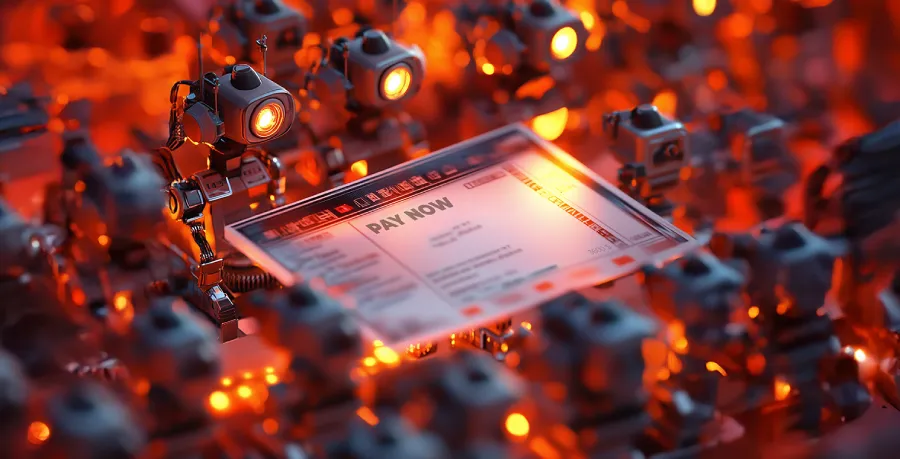

Successful Organisations are set up on the tripod of Vision, Mission, and Values.
The mission statement communicates the purpose of the organization. The vision statement provides insight into what the company hopes to achieve or become in the future. The values statement reflects the organization’s core principles and ethics.
Let us look closely at the relevance of ‘Vision’ for an Organisation.
Organizations draw up Vision Statement to provide a sense of purpose and direction for their business. Vision is the picture of the future that an Organisation desires to embrace. Vision projects before the Organisation the goal which it strives to reach, an embodiment of its hopes and dreams, giving focus and a clear road map to success.
Vision, more than just an Organisational aspiration, is the committed, concerted, conviction of all the stakeholders about the futuristic icon imaging all aspects of the Organisation. For the Vision to be truly potent and fruitful, it must be shared by all the stakeholders of the organization, unifying, inspiring, motivating, and synergizing the efforts of all in an ambitious and sincere way.
In the Management parlance and OB (Organisational Behaviour) discussions in Business Governance, management maestros draw the analogy of an Elevator/Lift to explain the importance of shared vision and conceiving a common goal by all the people in the Organisation.
Imagine you are working in a Corporate Office in the heart of a busy metropolitan city. Your office is on the 12th Floor of a twenty-storeyed building housing many large and small offices, working mostly from 10 a.m. to 5 p.m. It is common, on most of the working days, to see a small crowd of employees of these offices reaching the building a few minutes before 10 O’clock by different modes of transport- by trains, buses, four-wheelers, two wheelers, etc. anxiously waiting for the Lift. Yes, there will be a crowd on the ground floor, in front of the Lift, as the employees wait for the Lift to reach their respective offices. When the Lift comes and its door opens, people step in, and when the capacity load is reached, the door closes, leaving many behind waiting for the next trip. Usually, the person standing close to the panel- board of buttons indicating the floor numbers, presses the requisite buttons as the other persons enter the Lift request. When the Lift goes up and reaches, say 3rd Floor, the person who has to get down on that floor might be standing at the rear of the Lift, away from the door, as he would have entered with the first few at the head of the crowd waiting initially at the ground floor. When the Lift door opens on the 3rd Floor other persons standing on the front side of the Lift, nearer to the door, would make room for the 3rd-floor person to offboard. For this, sometimes, a few will have to even step out of the Lift. Likewise, the Lift moves up, stopping at different floors with people stepping out or in, and after the ascend to the top ultimately continues the mobility with the descend for the next trip.
Now, let us observe the Lift journey a bit closely:
(i) Usually, individuals enter the Lift in a disciplined way, not pushing out others along the way, on a ‘first come first in’ principle. If the capacity of the Lift is for 10 people, and you are not in a lot of the first 10 on arrival at the Lift front, you will stand back for the next trip. Of course, there might be a few unconcerned, unruly guys, jostling in! But these are exceptions!
(ii) Once inside the Lift, the person standing near the buttons goes on pressing the floor-indicator buttons as per the request of the person standing away from the panel of buttons. Seldom does he say, “I am not your servant; if you want, come here and press the button yourself”.
(iii) Nobody standing nearer to the gate usually stands rooted in his position, unbudging when a person standing in the rear wants to get out, with cursing and grumbling that “if you wanted to get out first, you should stand close to the door.”
(iv) When we enter the Lift, our perception is that it is a neat, small room well paneled with switches, buttons, and lights, sometimes with fans and music. But there are much more to a Lift – -pulleys, chains, different bolts, nuts, gears, etc. which we rarely think about. All of these help the smooth functioning of the Lift. A small bolt, which may have a financial worth of less than a rupee, is equally important as the sturdy chains that hold the Lift, for if this small bolt is broken, the entire machinery may come to a grinding halt!
Let us examine the behavioral pattern of the passengers in the Lift as seen in points (i), (ii), and (iii) above. The behavior exhibited indicates an unspoken and sometimes unconscious effort on the part of the persons to adjust, accommodate and cooperate with each other.
Why is this?
All the persons boarding the Lift have a common goal; the goal is to reach their respective offices on time, before 10, and mark their attendance. Visualizing and sharing this simple but important requirement, each one desists himself from any action that would delay realizing or reaching the goal. It is the shared vision of reaching one’s work desk in time that prompts everyone to adjust and cooperate to the maximum!
Lift itself is akin to an Organisation ascending to the success of reaching the vision of goal-realization and each employee in the Organisation, like every passenger in the Lift has to imbibe in himself the importance of a shared vision of success and a focussed view of purpose behind any effort. We have seen that in a Lift every single nut or bolt is important and indispensable. Similarly, in an Organisation, every employee is important, whether he is a Peon or the Managing Director and each one must play a significant and crucial role in the smooth running and progress of the Organisation.
This is the gist of the “Elevator Theory” in Organisational management.
A tailpiece:
Why is ‘shared vision’ important for an Organisation?
Peter Senge, the author of “The Fifth Discipline: The Art and Practice of the Learning Organization” sites ‘shared vision’ as one of the cardinal disciplines necessary to create a learning organization. Continuous improvement, even in the midst of changes constantly happening, is the mainstay of progress for any organization committed to growth. Continuous improvement requires a commitment to learning. To render focus and purpose to learning, there should be a beacon to guide you and that bright beacon is the vision you hold. Each employee should fervently believe in the vision- a belief strong enough to evangelize it to others and ultimately support the team, in its pursuit.
AS Senge emphasizes “A shared vision is not an idea. It is not even an important idea such as freedom. It is, rather, a force in people’s hearts, a force of impressive power.” We should keep ourselves open to continuously court this impressive power in our hearts as well as in our organization.
Mr. Mathew Vilayil

Popular BLOG

April 22, 2025
The Global Money Week

December 16, 2024
Pay Smart, Live Easy

December 13, 2024
Taxation in Web3: Simplifying Compliance in the Crypto Age

December 13, 2024
Decentralized Finance for the Digital Age

December 13, 2024
Philanthropy with Blockchain: Transforming Charitable Giving

December 13, 2024
A New Page for Blockchain-Driven Transactions

December 13, 2024
Digital and Physical Asset Ownership in Web3

December 13, 2024
Redefining Currency Exchange

December 13, 2024
Redefining Currency Exchange

December 13, 2024
Transforming the Insurance Landscape



